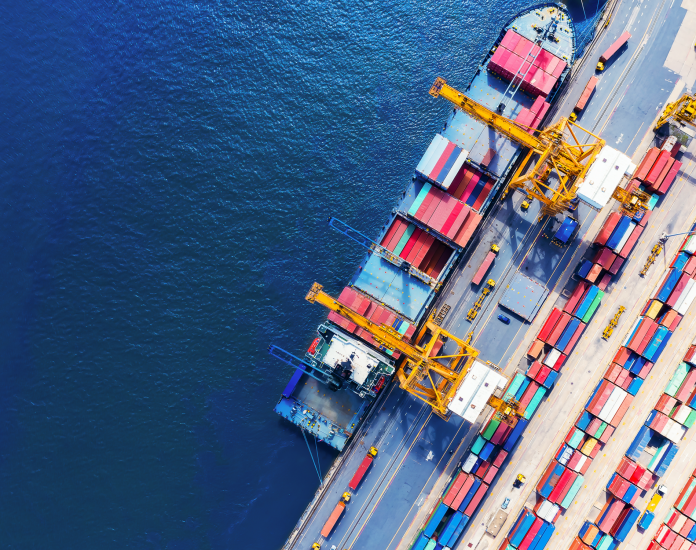The International Maritime Organization (IMO) intends to develop comprehensive measures to reduce greenhouse (GHG) emissions. Besides reducing the emissions associated with current shipping practices, the organization aims to phase them out of processes as soon as possible. These are not easy, straightforward milestones, but there are some specific things the organization should do to ensure that its changes pay off.
Create Progressive Goals
The IMO has an initial plan for reducing GHG emissions, and a key aspect of it is the progressively more ambitious targets. For example, it aims to cut shipping-related GHG emissions by 40% as of 2030 and 70% by 2050.
Doing that means making vessels more energy-efficient and looking at processes that contribute to above-average GHG emissions levels. However, this gradual and timely approach makes everyone aware of milestones and gets them thinking about meeting them. Collective action pays off when making significant changes like these. However, progress at the individual company level is also necessary.
Use Existing Data To Shape Milestones
The IMO has numerous studies confirming the current effects of GHG in the shipping sector. For example, one associated statistic was that emissions have risen over the years. Plus, estimates suggest GHG emissions will be from 90%-130% of 2008 levels by 2050. That range accounts for numerous economic and energy-based scenarios.
Relying on available research when setting new targets will make it easier to estimate the overall effects of any changes implemented and determine if it’s necessary to make tweaks. The data will also aid in assessing whether the proposed goals are feasible or slightly out of reach. The idea is to make targets challenging but not impossible to meet.
Accurate data also helps the shipping industry determine which areas to focus on first. For example, research shows that the world’s oil consumption causes 37% of cases where that substance ends up in the ocean.
Understand the Impacts of Various Measures
Numerous approaches — from using alternative fuels to choosing better ship designs — could reduce GHG emissions. Investigating which methods have previously shown the most short and long-term payoffs is also smart. Making progress means looking at the most obvious sources of pollution, as well as those that are not immediately evident to most people.
For example, the oil and gas industry often uses water purification systems in places with limited freshwater resources. Some products have advanced technologies to reduce membrane fouling or increase potable water supplies. A recent study of Hong Kong’s rivers found that their GHG concentrations were sometimes 4.5 times higher than atmospheric levels.
Industries already recognize the importance of water purification to keep operations running. The above example gives a useful reminder that future emissions reduction measures should address both air and water-based solutions, particularly since shipping companies affect both environmental aspects.
However, rather than choosing measures at random and hoping for the best, the IMO should create models to estimate which approaches will get the best results. Doing that allows setting realistic targets and achieving the most favorable outcomes.
Require Ships To Report GHG Emissions
Measuring whether the industry is getting closer to its goals requires gathering statistics about GHGs associated with ships arriving into ports. The IMO should consider taking inspiration from the European Commission in that regard.
It developed a three-pronged approach to curbing GHG emissions. More specifically, it included plans for monitoring, reporting and verifying emissions from the ships using European Union ports.
The monitoring aspect required gathering data about factors such as the fuel consumption, distance traveled and time at sea, then compiling the information into a submitted report. Implementing a system where relevant parties track emissions establishes accountability.
Provide Realistic Suggestions For Meeting Targets
Some GHG emissions measures may initially seem overwhelming. However, the key to encouraging participation in these significant goals is to give actionable suggestions for making them more manageable.
For example, reducing a ship’s speed with slow-steaming or using IoT sensors to measure GHG emissions to get baseline readings are two relatively straightforward places to start. Choosing and checking relevant metrics will tell shipping industry professionals whether they’re on the right track with meeting the IMO’s goals or must make further adjustments.
Making GHG emissions progress requires all affected parties to get on board and realize the necessity of reducing pollution. The tips here can help the IMO create measures that give the intended results and urge overall uptake of the changes.
Getting feedback from stakeholders throughout the process will also aid the IMO in tweaking strategies. Some efforts anticipated to bring major gains may not pan out as expected and vice versa. Responding to those outcomes accordingly keeps goals in sight.

Author of the article: Jane Mash
Jane Mash covers topics in green technology and manufacturing. She also works as the Editor-in-Chief of Environment.co.







